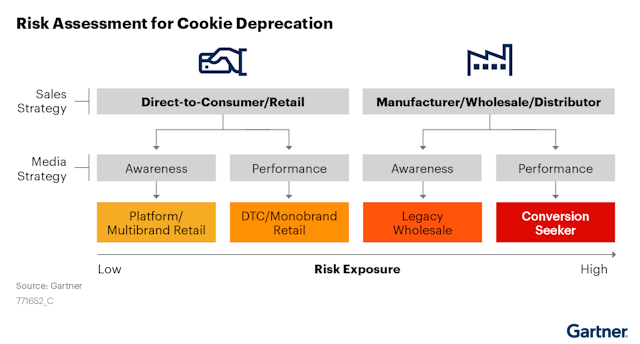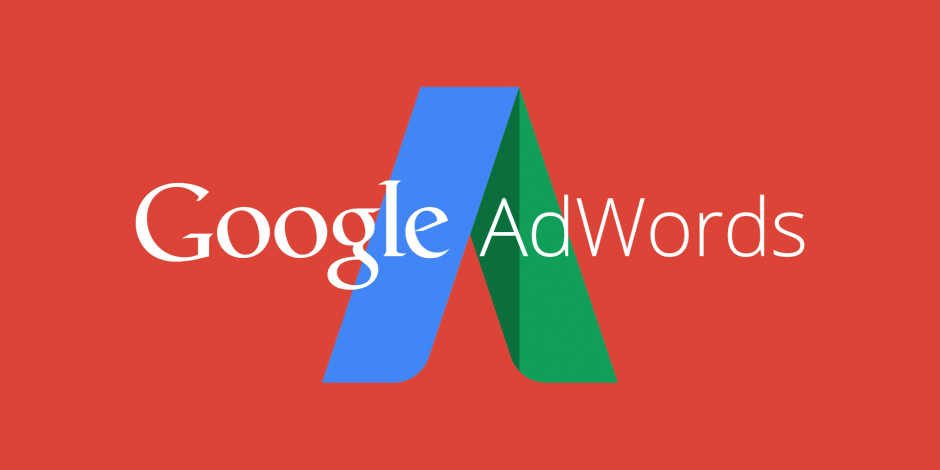The digital advertising industry is in a transformational era, with an opportunity for advertisers to re-imagine how they connect with people and deliver ads, without relying on personal data. Contextual advertising is being realized as a futureproof modern solution to help brands win in a cookieless world.
Contextual 1.0 was around text-based keyword targeting; Contextual 2.0 technology understands the full interplay of video, image and text on a page; so, if we look ahead to Contextual 3.0, how could that technology develop to account for diverse and dynamic environments, like the metaverse and beyond?
We put a call out to future gazers across the industry to share their thoughts on how contextual advertising could evolve in the coming years. Here’s what they had to say…
Eric Visser, president, EMEA, GumGum:
Today’s dynamic online environments are calling for a more modern approach to advertising – and the ramifications will be positive for the industry as long as marketers apply the new rules of engagement in these burgeoning virtual worlds. Capturing attention respectfully must be our focus, as opposed to interrupting audiences. What’s more, advertisers need to do so without relying on the use of personal data, and across emerging and previously unimaginable digital environments at scale.
The future of digital advertising lies in dynamically tapping into mindset and context, and, to this end, advertisers must focus on an individual’s frame of mind in moments that matter, rather than relying on outdated behavioural data, which has been proven ineffective. Digital advertising should be able to move with us as we navigate online platforms and worlds and it’s critical that the industry aligns its digital ads with the way audiences operate today, across increasing numbers of virtual worlds and platforms.
Buying and selling media based on contextual intelligence is a more sustainable paradigm in an industry that has been struggling with outdated and short-term methods for too long. And, looking further ahead, contextual doesn’t just support the environments of today, but the environments of the future, too. Whether playing virtual games, whilst using wearables, smart speakers and interacting with other connected technologies, there are new and emerging digital environments presenting themselves almost daily – and far more will follow that we have yet to imagine.
Approached right, modern contextual advertising is a win for consumers and a win for the industry. And while data privacy is of course essential and has made this all the more acute, there’s good reason why we keep hearing about the attention economy, too. Content and ads are proliferating at a rate that far outstrips the audience attention available. With online ad fatigue setting in, in a world awash with digital content, it’s essential for advertisers to shift how they deliver campaigns to break through the noise and capture attention, and to reduce media spend on irrelevant ads.
Paul Bland, head of biddable media, Havas Media Group:
Contextual elements, such as your location, the time of day, a moment in the calendar year or the activity you are currently engaging in (reading about sports, for example) have always been powerful signals, enabling brands to deliver more relevant and impactful marketing messages.
As virtual and physical worlds collide, within a truly virtual environment like the metaverse, technology such as an AR lens on your mobile phone, or another form of augmented reality on the next generation of devices, provides a genuinely exciting opportunity for marketers. Harnessing this technology allows us to better understand those contextual moments, and to better enable brands to engage and connect with people in a relevant and meaningful way.
So, contextual 3.0 offers us the opportunity to de-code virtual and physical contexts (whether that’s location, moment of interaction, virtual and physical space or activity) in new and exciting ways, to make marketing messages more relevant and helpful for people, and more impactful for brands.
Stuart Russell, chief strategy officer, Planning-inc:
Contextual advertisers will continue to develop new techniques for reaching target audiences on emerging channels. To take it a step further, these advertisers will pair these techniques alongside first-party data, AI and predictive modelling to better understand where the most valuable consumers will be (and what they will want) in the future.
Advertisers will become even more impactful by combining contextual signals with augmented first-party data to serve targeted advertising that is specifically designed to convert based on an individuals’ thoughts, opinions, and behaviours. It will ultimately tap into the individual consumer’s subconscious, enabling advertisements to become the proactive solution to their future problems and desires across channels.
Sam Budd, founder and chief executive officer, Buddy Media:
Contextual 2.0 has been all about matching segmented customers with relevant brands when scrolling webpages. In the 3.0 world, contextually relevant opportunities can be taken to a whole new level. The avenues for exploration are manifold. There are many steps in this evolution.
Firstly, we see AI as a stepping-stone to getting granular around multi-sensorial targeting. Secondly, as the Internet of Things continues to impact all areas of our lives, it will unleash ever-increasing touchpoints for brands to interact with customers. It is also about a full funnel approach: using CRM data, engagers, video watchers and historic purchasing behaviours, constantly analysing all contextual data points to maximize ROI. Finally, NFTs represent an unbelievable opportunity for brands and influencers to emotionally connect with their customers in a way that has never been done before.
As with everything, we need to be adaptable and ready for change when it comes to Contextual 3.0. As more privacy laws come in, agencies will need to be more inventive and dynamic (for example with their influencer strategy, where they will need to constantly learn about their audience’s engagement habits to deliver more contextually aligned messaging).
Toby Evans, director of publisher and platform partnerships, SoPost:
One of the key ways in which the metaverse differs from web 2.0 is a strong sense of place. Rather than a bunch of pages with content on them, the metaverse consists of worlds, and as VR and AR evolve, those worlds will become more fully realized. As more are created, so those worlds will become increasingly relevant to – and reflective of – the users in them. In other words, perfect for contextual marketing.
Of course, contextual advertising is also all about place. While the contextual advertising of today is about appearing in the right place, for web3, contextual advertising is just as likely to be the place: being present within a world where brands’ customers are, or even, for large brands, creating a whole world of their own.
At base level, the immersive environments of the metaverse should mean more attention for brands in those places, and technologies will allow messaging to be fully integrated in exciting new ways – no more being pushed to the right rail or buried in a tiny banner. Beyond that, decentralization and blockchain technology will allow the user to control the context of their environment. With their own experience driven by the consumer, the parameters of what ‘contextual’ means is likely to blur, with consumers rather than publishers and platforms controlling what they see and how. The good news is that it can only result in efficiency, and the most relevant consumers seeing the most relevant advertising.
Fran Roberts, creative director, Trollbäck+Company:
The evolution of contextual advertising will in most respects be driven (and improved) by the transformation from web 2.0 to web3. The next generation of contextual ads will be able to set the highly flawed third-party cookie-based model aside, instead of relying on user-validated information through machine learning models to determine context. This form of blockchain-based user management will allow for greater transparency, revising the advertiser-user relationship to a more sustainable one.
The content ecosystem for contextual ads will see reinvention. Via tokenization, creators of all shapes and sizes will be encouraged to create, contribute, and share more readily. This too will help rebalance ads’ economic model in a way that naturally encourages better creators. These evolutions will ladder up to what could be the main event for contextual ads and web3 – the emergence of fully new platforms and touchpoints (especially the metaverse).
The wider use of AR and VR-capable devices and platforms will add the multi-sensory experience into the equation for the first time. Through the introduction of multi-sensory information, contextual ads will be able to increase accuracy and most importantly appropriateness, while preserving privacy through blockchain-based data structures.
Elliott Millard, head of strategic planning, Wavemaker UK:
To slightly butcher Jeff Goldblum in Jurassic Park: the future of contextual advertising is more about what we should do, rather than whether or not we could do it. Technological advances will unquestionably make it possible for contextual advertising to exist in fully immersive, virtual and dynamic environments but that solution might not always be the best solution for our clients and the brands we work with. The volume of data involved and the challenges of latency (which is a bigger, different challenge for the metaverse) mean that context will have to be AI inferred.
When it comes to context there are some risks associated with delegation of decisions to machines. We think of these as challenges around safety, serendipity and surprise. Brand safety is critical in the online world, but AI makes connections that humans would flag as inappropriate – as I write there are platforms serving cleaning products to people with OCD. Contextually that’s on point but it would be morally indefensible even without the immersive worlds of the metaverse.
Algorithms also optimize to the easiest sources of growth – context delivered in this way would lose the priming, ‘brand’ effects of campaigns. Placements alongside the most obvious content might not be the most powerful. The serendipity of finding new sources of growth and building connections in new ways would be lost. Finally, an AI delivered placement could risk becoming bland – contextual relevance suggests that fitting in is always the best solution which is not always true. The (probably over quoted) party cannon poster and the Von Restorff effect show this in action but standing out and disrupting norms are an established way to deliver disproportionate growth.
There will be extraordinary work done in the virtual worlds of the metaverse but we should always consider how our work is experienced and whether it is the best way to deliver a business outcome rather than tech for the sake of tech.








